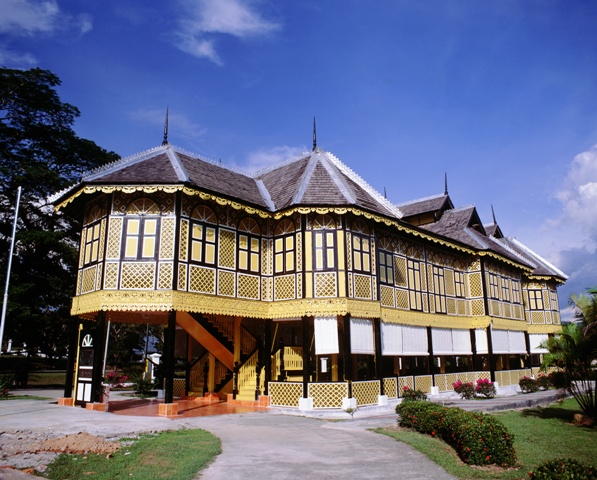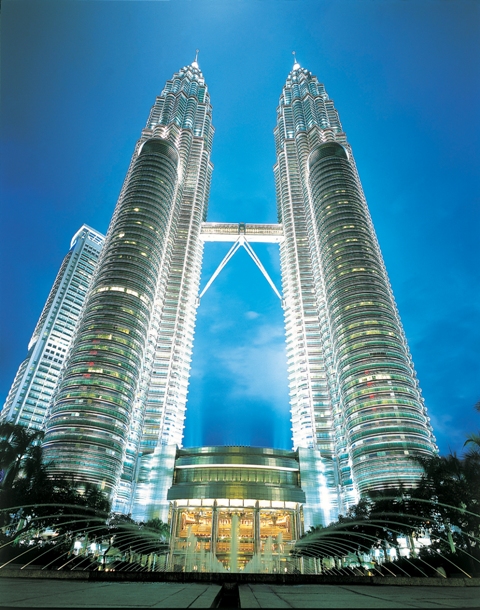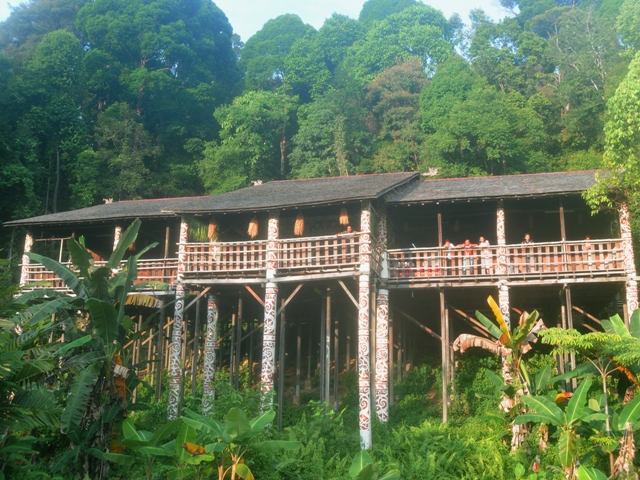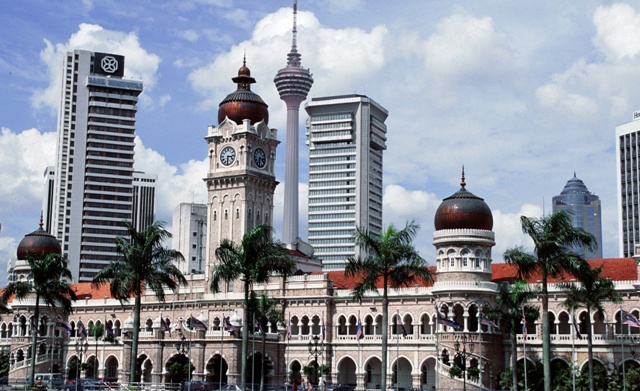One of the first things most visitors to Malaysia comment upon is the eclectic architectural styles that range from grand colonial edifices to glistening contemporary statements of mirrored glass and aluminium. Architects have borrowed from the east and the west to create something that is uniquely Malaysian. Here are five examples that represent some of the architectural variety in malaysia.
Istana Kayangan, Kuala Kangsar

The royal town of Kuala Kangsar, north of Ipoh, is well worth deviating into for those driving northwards along theNorth-South Highway. It is home toseveral fascinating buildings including the Ubudiah Mosque, the Sultan’s polo rotunda, and Istana Kenangan, which was a former residence of the Perak Sultan.Known as the bamboo palace, it is located close to the somewhat grander residence of the current sultan. Its yellow, black, and white woven bamboo exterior provides an alternate name for the former palace;Istana Tepas (tepas meaning woven strips of bamboo). Construction commenced in1926 and took a handful of artisans a year to complete, and the palace is considered one of the great masterpieces of Malay building and craftsmanship. While the interior is interesting, it is the exterior which will impress most visitors. The palace now houses a museum on the state’s royalty.
Petronas Twin Towers, Kuala Lumpur

It would be remiss to omit the Petronas Twin Towers from any list of Malaysian architectural attainments, being as it is a gleaming beacon for architectural achievement in the nation and the landmark tourist attraction in Kuala Lumpur. At 88 storeys, these Twin Towers were once the world’s tallest buildings, although other nations’ nationalistic prowess have seen it sink a notch or two; it now seems minute compared to Dubai’s Burj Khalifa at 828m and 160 storeys. Not to be outdone, they remain, at 375m tall (452m to the tip of the antenna), the world’s tallest twin towers. The steel and glass design was selected from entries submitted by many of the world’s leading architectural firms. Boston-based César Pelli and Associates won the contest and piling for the project commenced in 1993. Argentina-born Pelli has designed many leading buildings around the globe including the World Financial Center adjoining the former World Trade Center in downtown Manhattan.
Putrajaya
The Federal Territory of Putrajaya is one of the world’s largest planned cities. This city is now the seat of power for the nation but not the capital, which remains as Kuala Lumpur. Development of the former plantation estates located 25km south of Kuala Lumpur commenced in 1996, and by 2012 most of the government departments were headquartered here. Known as a “green city,” up to 40% of the total area has been allocated to parks, wetlands, and artificial lakes. There are many landmark buildings here, with the red and white tiled Putra Mosque on the foreshore of a lake being one of the most impressive. Its minaretsoars 116m into the Putrajaya sky.
Sarawakian Longhouse, East Malaysia

In East Malaysia, the most famous local structures are longhouses which are exactly as stated – long houses. These buildings are home to various families who, in the past, lived together for security and group living. Many still exist and each community lives as a village under one roof. In the interior, at the front of the building is a long open verandah with various doors at the back leading off to each family’s private space. The community’s size is noted for how many doors there are leading off the verandah. Most visitors to longhouses will only see the communal verandah, the centre of all social activity in the village. Most longhouses front onto a river or stream as this is the only way in and out for the more remote longhouses. They are built on stilts for ventilation and protection from rising floodwaters (and fellow head hunters in days gone by). Many remote destinations in Sarawak have the prefix “Long” in their names, and this refers to them being a longhouse community.
Sultan Abdul Samad Building, Kuala Lumpur

This grand colonial structure along Jalan Raja is certainly one of the city’s most photographed buildings, with tour buses lining up here on a daily basis. It was built in 1897 on the Padang, an area now known as Dataran Merdeka. It is built in a Mogul style and includes gleaming copper domes (recently cleaned), crenellated parapets, scalloped arches, and a large clock tower. The grand structure was named after the then reigning sultan of Selangor and was initially home to the offices of the newly established Federated Malay States Government, and it set the trend for other buildings in the area that emulated the “Raj style” (with its origins in India). Its juxtaposition – located next to the modern 35-storey Dayabumi Building – typifies the city’s architectural variety. The building used to be outlined by twinkling fairy lights in the evening, but a new lighting system provides yet another dimension to its innate beauty.
———————————————————————————————————
Source: Senses of Malaysia May-Jun 2013
Read more:
What are your thoughts on this article? Let us know by commenting below.No registration needed.
"ExpatGo welcomes and encourages comments, input, and divergent opinions. However, we kindly request that you use suitable language in your comments, and refrain from any sort of personal attack, hate speech, or disparaging rhetoric. Comments not in line with this are subject to removal from the site. "




















